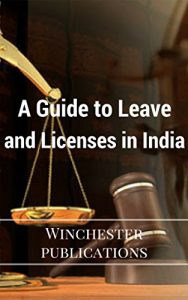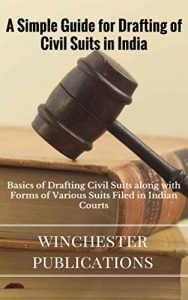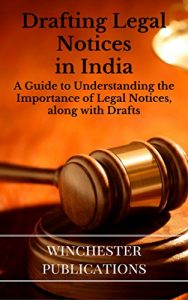The concept of Leave and License is has not been encapsulated in a separate and independent Act of the Legislature. This concept has been embodied in the Indian Easements Act, 1882. Section 52 till Section 64 of the Indian Easements Act, 1882, deals with licenses and their governance. A License unlike a Lease, is a mere right to make use of the subject property. Lease involves handing over the possession of the premises/ plot of land to the lessee. The Lessor, unless there is an agreement to the contrary, reserves only the right of ownership of the subject property. License on the other hand, is a mere permission given and the said permission does not include the absolute right of possession of the subject property. In a license, the licensor reserves the right of possession, both legal and physical. The Licensee is merely given the right to use it for the purposes in terms of the license agreement. The legal convention is that the courts try to infer the intention of the parties so as to determine whether if the parties intended to create a Lease or License. An Agreement for Leave and License should be carefully drafted so to project that the intention of the parties is only to create and license and not a lease. The absolute possession of the subject property should never be handed over the Licensee, for otherwise the agreement maybe construed as a Lease Agreement. An Agreement for leave and License is to be made for a period of 11 or less that 11 months only as an agreement granting a lease or a license for a period 1 year or more, is required to be registered as per the Indian Registration Act 1983.
Licenses though were meant for immovable properties to be given for purpose other than residential, are widely being used for letting out flats and houses, in lieu of monthly rents. The legislature enacted the Rent Control (Protection from Eviction) Act, which has been bespokly changed and adopted by various states, to govern the rental transactions. Since the grounds for eviction of a tenant under the Rent Act were limited and narrow, landlords started entering into Leave and License Agreements with their tenants, in order to escape the rigidity of the Rent Act. Unlike a Rent/Lease Agreement, a covenant empowering the landlord to evict his tenant any ground, upon serving a statutory notice is valid.
This book is my humble endeavour to simplify the concept of leave and licenses, for the benefit of both the Landlords and their Tenants. The contents of this book are correct to the best of knowledge.
Licenses though were meant for immovable properties to be given for purpose other than residential, are widely being used for letting out flats and houses, in lieu of monthly rents. The legislature enacted the Rent Control (Protection from Eviction) Act, which has been bespokly changed and adopted by various states, to govern the rental transactions. Since the grounds for eviction of a tenant under the Rent Act were limited and narrow, landlords started entering into Leave and License Agreements with their tenants, in order to escape the rigidity of the Rent Act. Unlike a Rent/Lease Agreement, a covenant empowering the landlord to evict his tenant any ground, upon serving a statutory notice is valid.
This book is my humble endeavour to simplify the concept of leave and licenses, for the benefit of both the Landlords and their Tenants. The contents of this book are correct to the best of knowledge.








